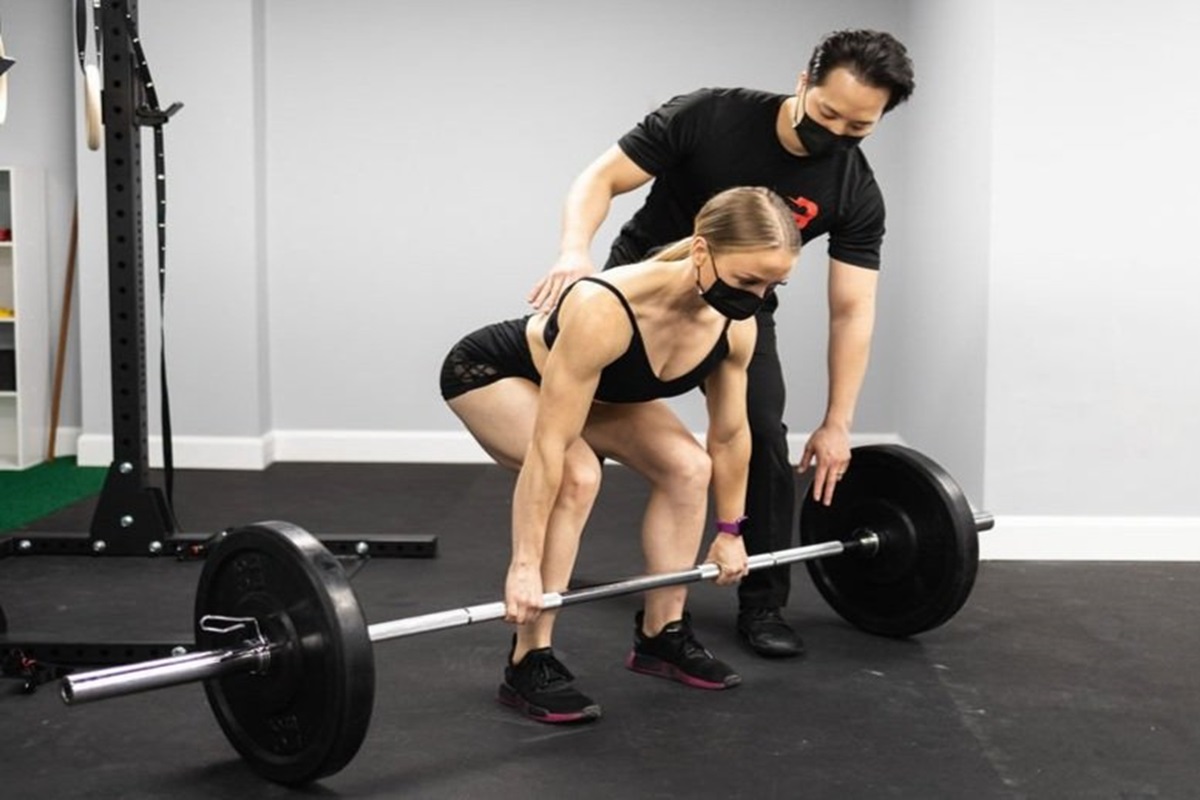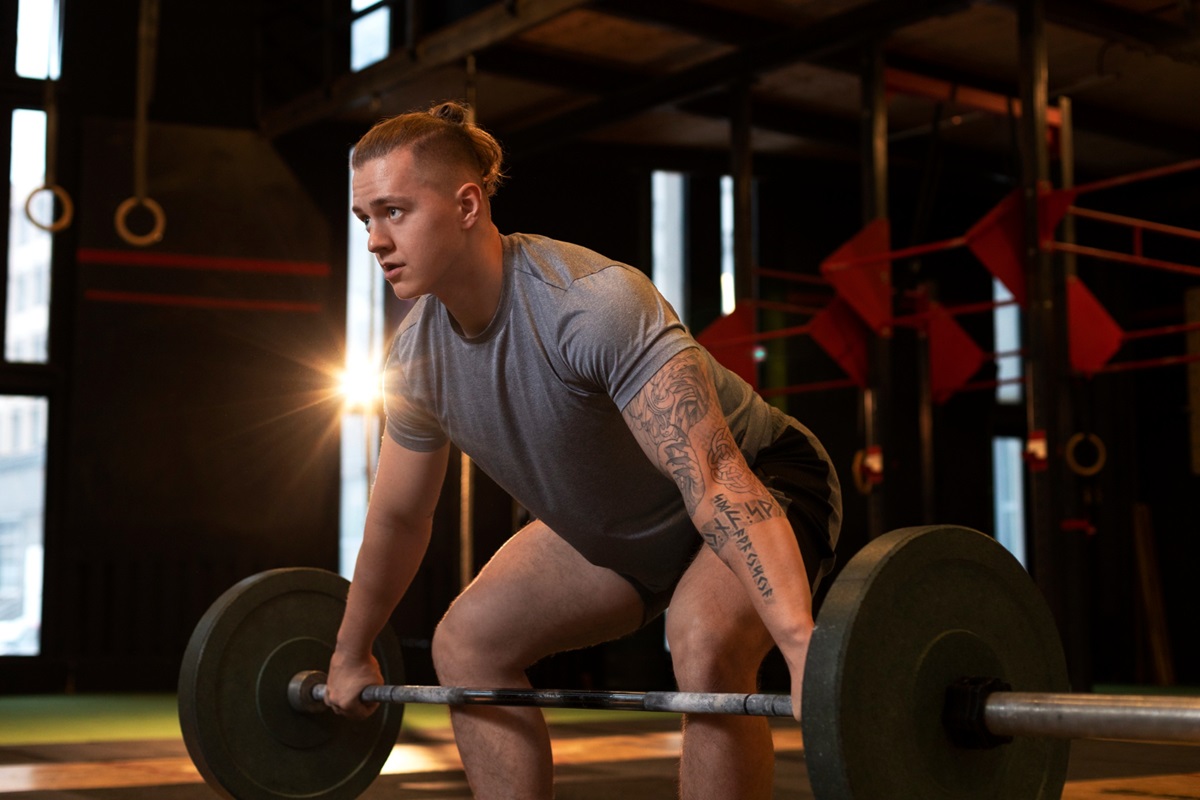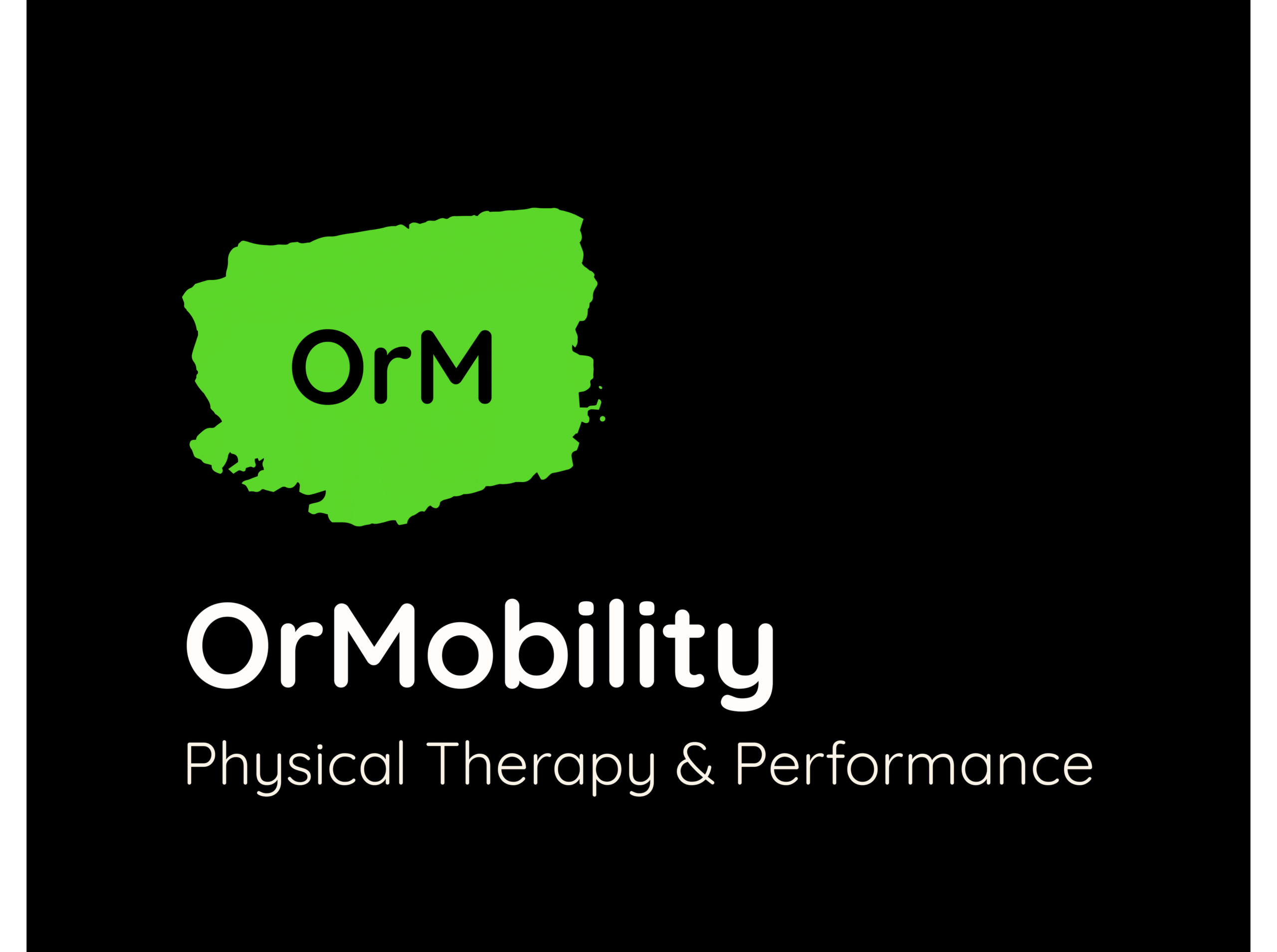Lower back pain after deadlifts is an incredibly common issue that affects both beginners and experienced lifters. This pain can range from mild soreness to more intense discomfort, and it often raises questions about injury risk and recovery strategies. Whether it’s due to poor form, inadequate warm-up, or overtraining, lower back pain after deadlifts doesn’t have to sideline your progress. In this article, we’ll break down the causes, solutions, and how to get back to lifting pain-free. We’ll also explore how OrMobility Physical Therapy & Performance can assist in long-term recovery and injury prevention.
Why Does Your Lower Back Hurt After Deadlifts?
Deadlifts are a powerhouse exercise, but they can quickly become problematic if performed incorrectly. Experiencing lower back pain after deadlifts may indicate a breakdown in form or the presence of an underlying issue. By understanding the causes and symptoms, you can address pain and return to lifting safely.
Low back pain is a leading global health issue, affecting hundreds of millions of individuals. According to global health data, nearly 620 million people were impacted by low back pain in 2020 alone, making it the most common cause of disability across the world.
Understanding the Common Causes
Lower back pain deadlift issues are often rooted in technique. Rounding the back, not engaging the lats, or pulling with the spine rather than the hips can all lead to stress on the lumbar region. These mistakes often turn a great movement into a painful one.
Research from the University of Kentucky highlights that performing deadlifts with heavy loads can exert intense pressure on the lower spine, especially around the L5/S1 vertebral junction. This mechanical stress may exceed safe loading thresholds and raise the risk of injury if not managed with proper technique.
Improper shoulder position, hips too high, and hyperextending the back are other examples of incorrect form that compromise spinal safety. Reset after each rep, maintain neutral spine alignment, and ensure proper form to reduce the risk of injury. Remember, core engagement and abdominal activation help stabilize the lumbar spine throughout the lift.
When Muscle Soreness Is Normal vs. Pain
It’s essential to distinguish between normal muscle soreness and problematic pain. If your lower back is sore after deadlift training but improves with light movement and rest, it’s likely DOMS. Many lifters notice their lower back sore after deadlift sessions, especially when returning from a break or increasing load.
Sharp pain, persistent discomfort, or symptoms that worsen over time may suggest a strain, joint irritation, or disc involvement. If your lower back is sore after deadlift training but improves with light movement and rest, it’s likely DOMS. Sharp pain, persistent discomfort, or symptoms that worsen over time may suggest a strain, joint irritation, or disc involvement.
Red flags include weakness in the legs, numbness, tingling, or a sharp pain that interferes with walking or standing. These symptoms warrant medical advice and a professional evaluation to rule out serious injury. A pre-existing lower back injury can also increase the likelihood of experiencing lower back pain after workout sessions.
Prevent Lower Back Pain With These Deadlift Tips
Staying pain-free starts before you even lift the barbell. Proactive injury prevention, proper technique, and awareness of your body can prevent lower back pain after deadlifts from ever starting. Here’s how to make deadlifting safer and more effective.
Warm Up Right to Protect Your Back
Jumping into heavy sets without a proper warm-up can increase your risk of developing lower back pain after deadlifts. Begin with dynamic movements like hip circles, bodyweight hinges, and foam rolling to prime your posterior chain.
Include dynamic stretching exercises that focus on the hamstrings, glutes, and lower back muscles. Abdominal activation drills and glutes and hamstrings activation also help your body prepare for the intensity of deadlifting.
Perfect Your Deadlift Form Every Time
Correct form is your strongest ally against lower back pain from deadlift sessions. Focus on:
- Keeping your spine neutral: A neutral spine prevents excessive pressure on the lumbar spine and reduces ligament strain.
- Engaging your core: Strong core stability exercises enhance control and protect the lower back.
- Driving through your heels: Promotes proper hip-hinge movement and decreases reliance on the lower back.
- Initiating the movement with your hips, not your back: This ensures you’re using your posterior chain efficiently.
Even seasoned lifters benefit from occasional form checks, physiotherapy sessions, or video reviews. Form fixes such as adjusting stance, grip, and ensuring upper back engagement go a long way.
Can Deadlifts Actually Improve Back Health?
Absolutely. When done correctly, deadlifts strengthen the muscles that support your spine, potentially reducing future episodes of lower back pain. They promote good posture, enhance core stability, and increase resilience in daily activities.
Deadlifts can help with muscle imbalances, build lower back muscle strength, and improve overall function. Variations like Romanian deadlift or single-leg Romanian deadlifts offer strength-building benefits while easing lumbar spine load.
Immediate Relief for Lower Back Pain After Deadlifting

Experiencing sharp pain or burning pain right after deadlifting can be concerning. Immediate relief measures can minimize damage and support faster healing. Incorporating effective self-care efforts and professional help can make all the difference.
Effective Self-Care Techniques at Home
Rest is the first step to reduce acute pain and allow the body to heal. Hot therapy and cold therapy, such as heating pads or ice packs, can reduce inflammation and alleviate pain. Light mobility exercises and active recovery techniques like stretching and foam rolling encourage blood flow and prevent stiffness.
A proper post-workout stretch routine helps reduce soreness and promotes healing. Joint mobilisation and myofascial release techniques can also relieve tension and improve tissue quality in the lower back.
When and How to Use Over-the-Counter Pain Relievers
If pain persists beyond a day or two, NSAIDs like ibuprofen can help manage inflammation. Use them as directed and avoid relying on them as a long-term solution for lower back pain from deadlift movements. Combine medication with other treatments like core stability exercises or deep tissue massage for better results.
If symptoms escalate despite NSAIDs and rest, seek medical advice from a doctor. Evaluating red flags such as numbness, weakness, or loss of mobility is crucial to prevent long-term issues.
Physical Therapy: A Key to Safe Recovery
If the pain doesn’t subside or interferes with daily life, it may be time to see a physical therapist. At OrMobility, we assess movement patterns, address muscular imbalances, and guide you back to pain-free lifting.
Physical therapy may involve manual therapy, movement retraining, or dry needling. These techniques target underlying issues that contribute to lower back pain after workout routines like deadlifting.
How OrMobility Physical Therapy & Performance Can Help You
At OrMobility Physical Therapy & Performance, our expert clinicians tailor recovery plans for individuals experiencing lower back pain after deadlifts. Whether it’s through manual therapy, corrective exercise, or performance coaching, we focus on long-term solutions to keep you strong and mobile.
Back pain treatment at OrMobility includes deep tissue massage, physiotherapy sessions, strengthening exercises, and customized recuperation schedules. We help you build a pain-free recovery path while addressing any underlying issues or pre-existing injuries.
Safe Return: When to Deadlift Again After Back Pain
Knowing when to return to lifting is just as important as knowing how to lift. A premature return can worsen lower back pain deadlift complications. Proper recovery and progressive reintroduction to lifting help prevent reinjury.
Signs You’re Ready to Lift Safely
You should be pain-free with daily activities, have full range of motion, and demonstrate proper core control before returning to deadlifting. If your lower back is sore after deadlift practice despite rest, more recovery may be needed.
Pay attention to gradual reintroduction, neutral spine alignment, and strength in the lower back muscles. Use a weightlifting belt or supportive brace only as needed and not as a crutch for poor technique.
How to Progress Without Reinjury
Start light and slow. Use a partial range of motion (e.g., rack pulls), tempo work, or resistance bands to rebuild strength without overload. Monitor for recurring symptoms of lower back pain deadlift-related issues.
Integrate alternative exercises like back extensions, single-leg Romanian deadlifts, and unilateral exercises. These can help build posterior chain strength while avoiding excessive lumbar spine load.
Exercises That Support Lower Back Recovery
Rehabilitation exercises support lower back healing and strengthen key areas. Focus on building resilience in your core, hips, and posterior chain to prevent future injury. These exercises work best when combined with movement retraining and manual therapy.
Cat-Cow Stretch for Mobility
This gentle spinal movement promotes blood flow and reduces stiffness. Incorporate it into your daily routine to manage lower back pain after deadlifts.
It also helps with spine segmentation, improving control and flexibility. Cat-Cow serves as an excellent warm-up or cool-down for recovery days.
Bird Dog and Dead Bugs for Stability
These core stability drills train the deep muscles supporting the spine. They’re essential for addressing underlying issues that cause lower back pain from deadlift sessions.
Add abdominal activation during these exercises to ensure proper muscle engagement. They promote balance, reduce muscle imbalances, and enhance neuromuscular coordination.
Glute Bridges and Hip Hinges to Strengthen Core
Strong glutes and hips help offload the lumbar spine during lifting. Mastering these foundational movements protects against future pain.
Glute bridges activate posterior chain muscles and improve core control. Practicing the hip-hinge with lighter weights teaches proper movement mechanics before progressing to conventional deadlifts.
Recommended Alternatives to Traditional Deadlifts

If traditional deadlifts remain problematic, consider:
- Trap bar deadlifts: Reduce shear stress on the lumbar spine.
- Romanian deadlifts: Enhance hamstring and glute strength without overloading the back.
- Single-leg hinges: Promote balance and reduce compensatory movement.
These alternative exercises support continued strength development while minimizing risk.
Long-Term Strategies to Avoid Future Pain
Consistent preventative measures keep your lower back pain-free. Focus on strength, recovery, and smart gear choices to build longevity in lifting. OrMobility Physical Therapy & Performance can help guide these strategies with expert care.
The Importance of Consistent Strength Training
Ongoing strength work for the posterior chain, core, and hips reduces injury risk. Consistency is key to keeping lower back pain after deadlifts from becoming a chronic issue.
Incorporate strengthening exercises such as the good morning, core stability exercises, and hip-hinge movements. Stick to a structured recuperation schedule to ensure adequate recovery between sessions.
Using Supportive Gear: When and Why
Lifting belts and supportive shoes can assist when used appropriately, especially during max effort lifts. They should never replace proper technique or programming.
Supportive braces may be useful during recovery phases but should not be used long-term. Proper technique and regular evaluation from professionals are more beneficial.
How OrMobility Physical Therapy & Performance Guides Prevention
We don’t just treat pain—we prevent it. OrMobility’s holistic approach includes movement screening, functional testing, and ongoing coaching to ensure long-term success.
Our programs also offer dry needling, manual therapy, joint mobilisation, and professional massage therapy to maintain optimal function. With expert care, we help you avoid persistent discomfort and ensure pain-free recovery.
Conclusion
Lower back pain after deadlifts is common but manageable. By understanding its causes, improving technique, implementing effective relief strategies, and getting professional support when needed, you can return to deadlifting stronger and safer. OrMobility is here to help you through every stage—from pain relief to performance. For back pain treatment at OrMobility, schedule a consultation today.
FAQs
Is it normal for the lower back to hurt after deadlifts?
Mild soreness is common, but sharp or persistent pain could indicate improper form or injury. Evaluate whether you’re experiencing delayed-onset muscle soreness or more serious symptoms like joint irritation or muscle strain.
How long does it take for a pulled lower back to heal?
Most mild strains improve within 1–2 weeks, but severe cases may take longer. Seek evaluation if pain persists or if you experience numbness or tingling.
Is lower back pain a muscle or disc?
It depends. Muscular pain is more common, but disc involvement can occur. A physical therapist or doctor can help identify the cause accurately with a professional evaluation.


